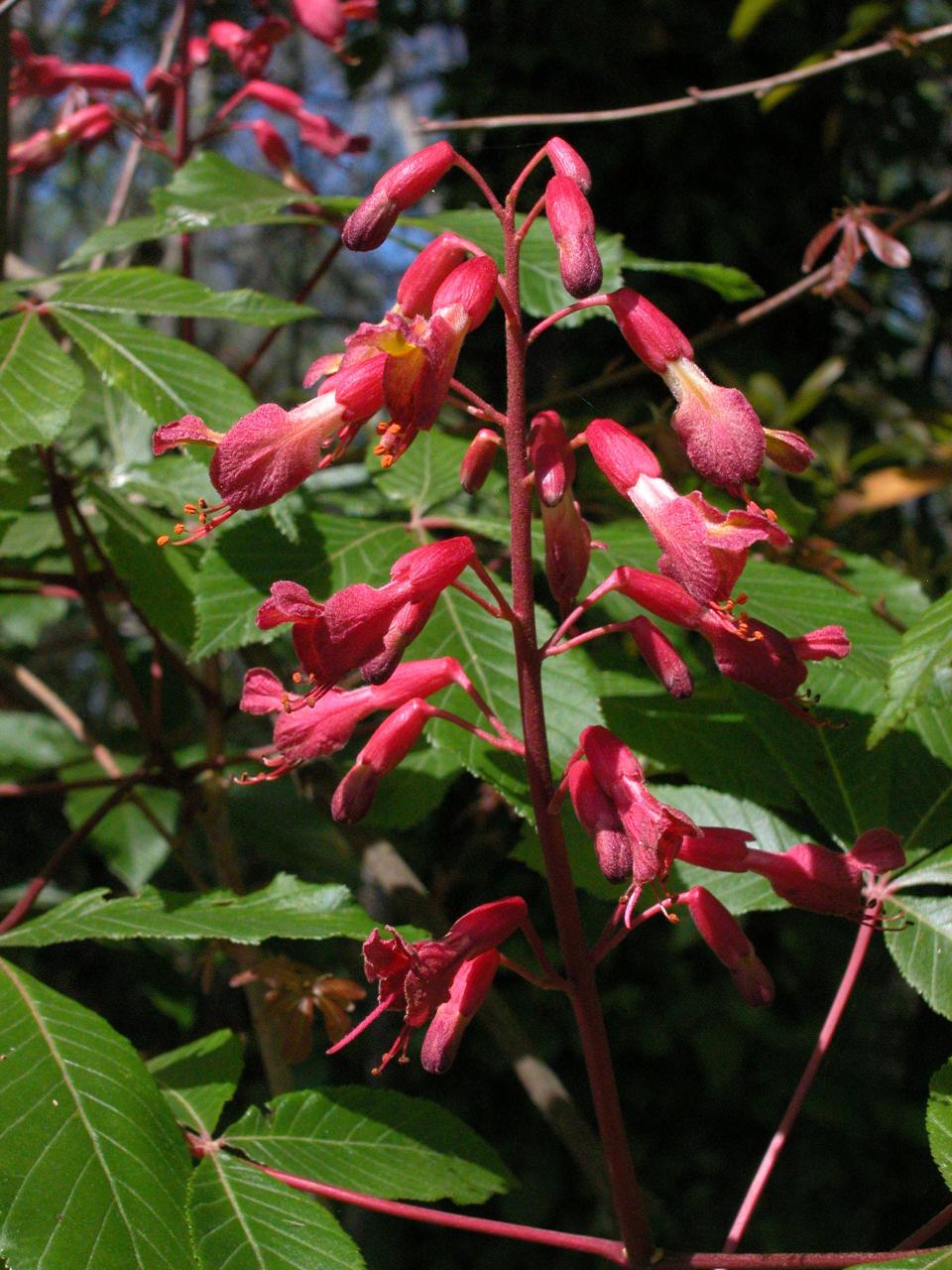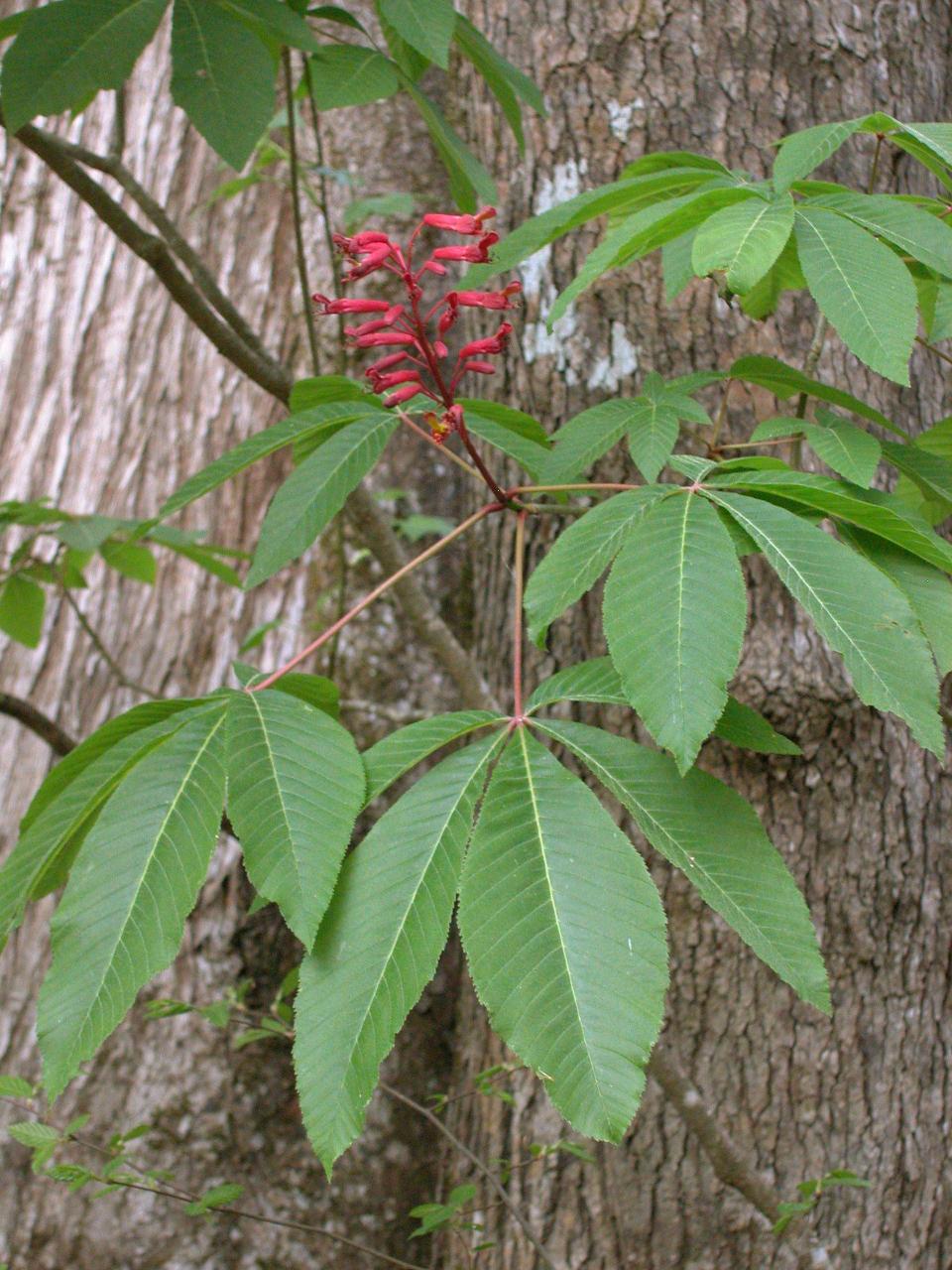This flash of red lights up spring woodlands | Mystery Plant
Spring has officially arrived, along with its fragrant wisterias, brilliant jessamine, and charming crimson clover. Finally! And to celebrate, let me offer one of the most attractive of the spring-blooming Southeastern species — and a woody species at that.
Red flowers are not very common in our southern tree species, and certainly not tubular red flowers. This species’ flowers fit both attributes. A flash of bright red in the shady woods is always a treat, especially now.

This species (“Red buckeye," Aesculus pavia) is most often a small, slender tree, or perhaps just as commonly, a shrub. Its bark is pale brown, and smooth. All winter long it has been leafless, but now its foliage is coming back, the leaves quickly unfolding and spreading from their large, knobby buds.
The leaves are very attractive, and a bit unusual for the trees species in this area. There are two long-stalked leaves at each node, and thus the leaf arrangement is opposite...not too many different types of trees around here have opposite leaves. Furthermore, each leaf blade is palmately divided into distinct leaflets, each one pointed on the tip and toothy along the margins.
The flowers are appearing now. They develop in a branching panicle, arising from the tip of a branch. Each flower has a tubular, reddish calyx at the base, with bright red petals and some stamens, poking out of the end. Usually, two of the petals stick out at an angle from the tip, and the effect is something like a red cigar with Mickey Mouse ears.
In my experience, the flowers aren’t fragrant, but they are very attractive and showy. And, this species, as an early-spring bloomer, is one of the first food sources for hungry hummingbirds coming back from their winter sojourns.

After the flowers fade, young fruits will develop. Over the summer these fruits will swell considerably, forming solid, smooth, pod-like structures, up to about 3” across. Each fruit will eventually begin to split open on two or three seams, and one or two handsome brown seeds will fall out.
The seeds are quite attractive, beautifully glossy, and marked such that each one looks a bit like the eye of a deer. You have to use your imagination.
This species is found from eastern North Carolina along the coastal plain, and in parts of the piedmont, down to northern Florida and all the way along the Gulf Coast to Texas, where a yellow-flowered variant is also known. In the Mississippi River valley, it can be found as far north as the southern part of Illinois.
It seems to be most common in swamps, rich woods and along ravine slopes, especially over soils rich in limestone, or coquina. It does very well in considerable shade, but is also seen in sunny habitats.
You don’t often see this species grown in cultivation, which is a shame, because it really is pretty, and adaptable, they say. One of the prettiest native spring-blooming woody plants you could put in your yard.
John Nelson is the retired curator of the Herbarium at the University of South Carolina, in the Department of Biological Sciences. As a public service, the Herbarium offers free plant identifications. For more information, call 803-777-8175 or email johnbnelson@sc.rr.com.
This article originally appeared on Tallahassee Democrat: The red buckeye provides a welcome flash of red in spring

